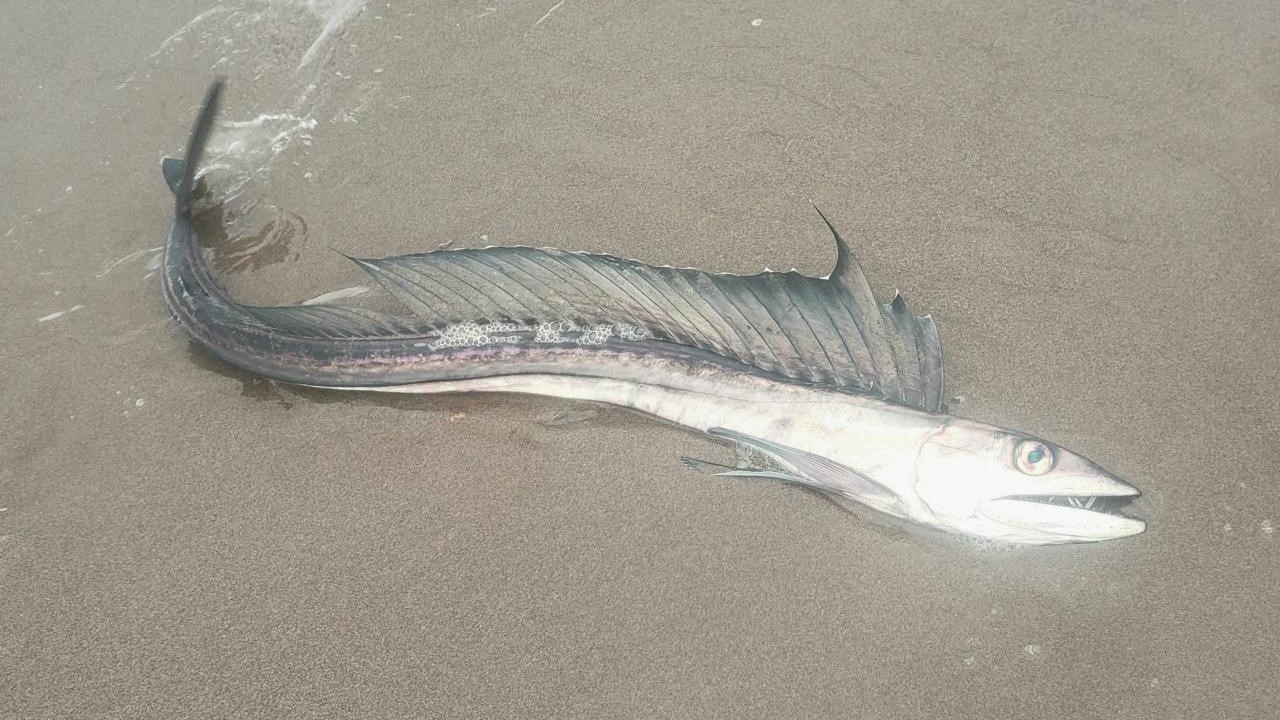
Bizarre, rarely seen cannibalistic fish with giant eyes and dagger-like fangs have been washing up along the Oregon coast, leaving experts stumped.
In a Facebook post on May 1, Oregon State Parks wrote that several lancetfish had been found on beaches from Nehalem south to Bandon in recent weeks.
"No one is sure why they are washing ashore," the post read.
Longnose lancetfish (Alepisaurus ferox) normally live in tropical and subtropical waters. While they can be found in shallow waters, their preferred habitat is the twilight zone — around 650 to 3,300 feet (200 to 1,000 meters) beneath the ocean surface.
One of the lancetfish recently found in Oregon was still alive when it washed up and was helped back into the ocean and it was able to swim off, Oregon State Parks wrote.
Lancetfish are extremely strange creatures. They are one of the largest deep-sea fish, growing up to 7 feet (2 m) long, and they have a sail-like fin that extends across almost the entire body. They are hermaphrodites (having both male and female sex organs), they have gelatinous muscles and their bodies are covered in pores. They are also notorious cannibals, as evidenced by small lancetfish often cropping up in the stomachs of larger ones.
Daniel J. Kamikawa, a research fisheries biologist at the National Oceanic and Atmospheric Administration's (NOAA) Northwest Fisheries Science Center, told Live Science in an email that he could find no record of past mass strandings or die-offs of lancetfish. Normally one or two individuals are found across widespread locations on the coast. He said that from his research, "strandings in Oregon and elsewhere are not exactly common or occur regularly."
"The pattern — if you can call it that — seems to be a few get washed often at widely spaced locations where they make the local news but there is no coordinated effort to quantify the sightings and once the initial furor dies down enough time goes by before the next stranding that the previous stranding has been forgotten and the cycle starts anew."
Why several lancetfish have washed up along a stretch of coast around 180 miles (290 kilometers) long is unknown.
Kamikawa said there are three potential theories as to why the cannibal fish washed ashore. The first is that these fish are injured or ill so cannot swim effectively and get pushed to shore. The second is that a storm washed them in. The third relates to a phenomenon known as temperature shock — where a fish is suddenly exposed to water that is far colder than their normal temperature range.
"This causes the fish to go into shock and can greatly incapacitate and/or be fatal to the fish," he said. "But again these are all unproven theories."
The mystery of why these lancetfish washed up may never be solved and it is unclear whether any were collected for analysis. Oregon State Parks has asked members of the public to take a photo of any lancetfish they come across and post it to the organization and NOAA Fisheries West Coast.







